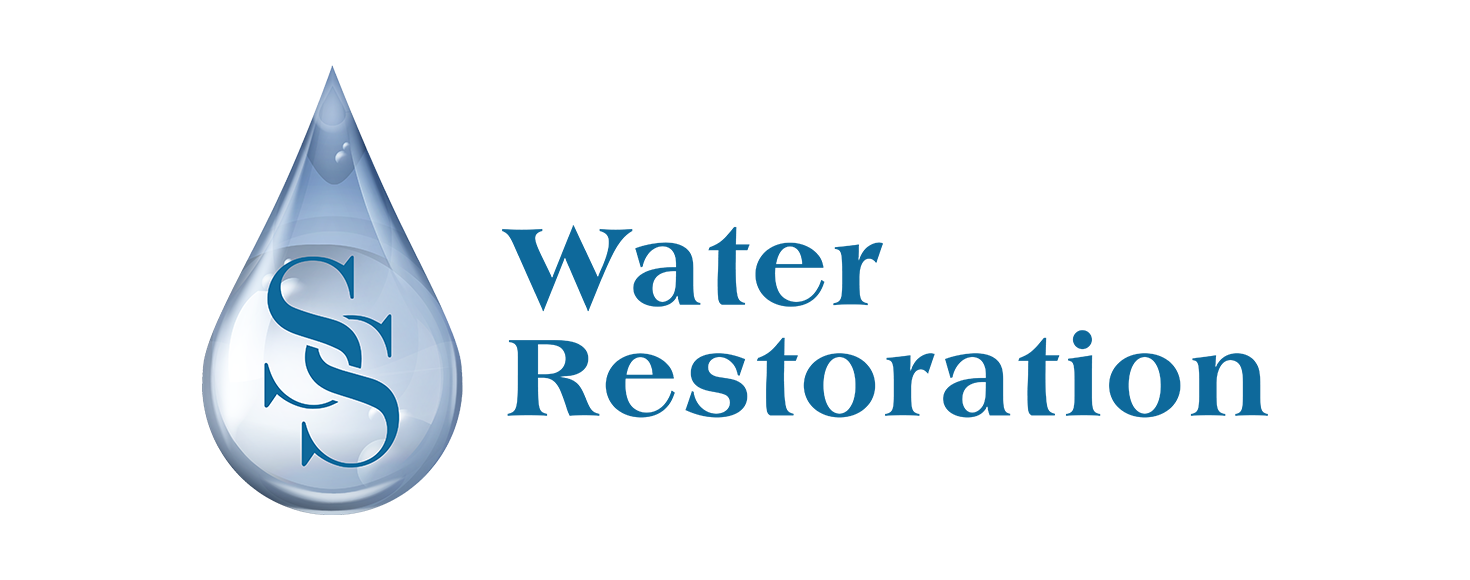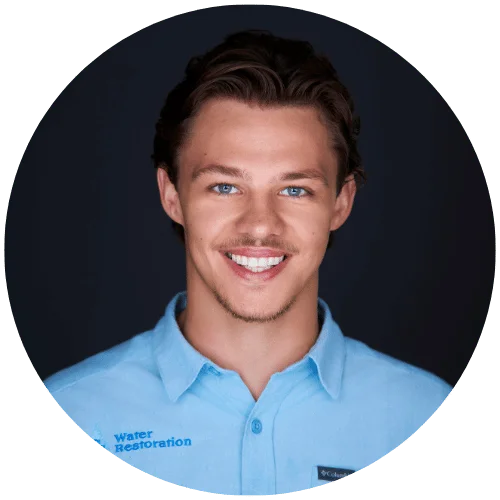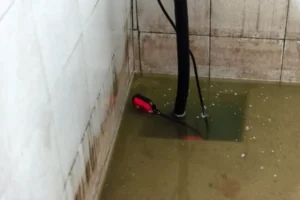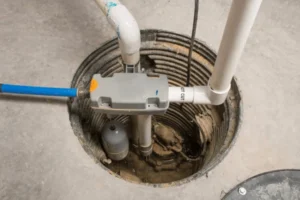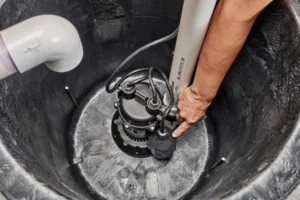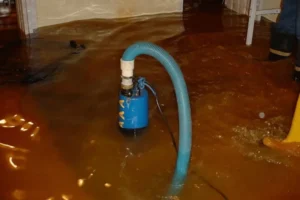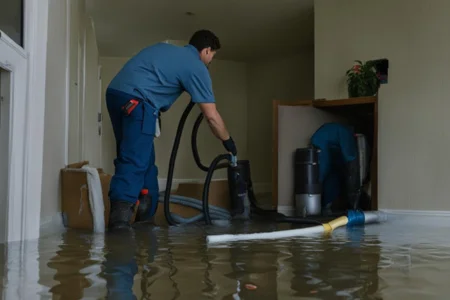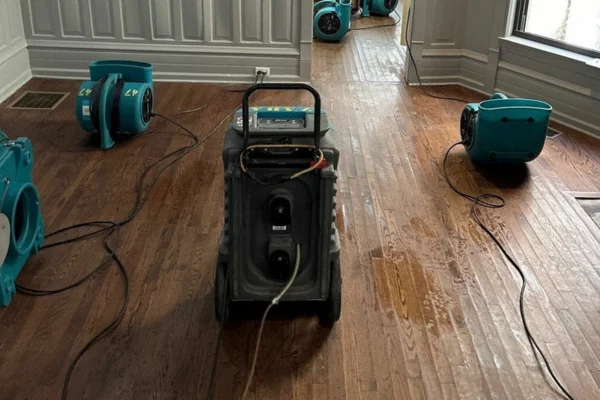Homeownership requires constant attention, and even one overlooked detail can lead to disaster. One such detail? Your sump pump. Often out of sight and out of mind, this critical device plays a significant role in protecting your home from water damage. When a sump pump fails, the consequences can be swift and costly, ranging from basement flooding to mold growth and long-term structural damage.
In this article, we’ll explore the consequences, discuss early warning signs, and explain the steps you can take to prevent future issues through proper sump pump maintenance. We’ll also cover what to do in the event of failure so you can minimize the impact and avoid expensive repairs.
Let’s take a closer look at common sump pump failure causes and what happens when these critical home systems start to fail.
What Happens When a Sump Pump Fails?
Sump pump problems can expose your home to severe water damage, especially during heavy rainfall or snowmelt. When this equipment fails, the protective barrier between your foundation and rising groundwater disappears, leaving your basement vulnerable.
How a Failed Sump Pump Leads to Basement Flooding
The most immediate consequence of sump pump failure is basement flooding. Whether due to power outages, clogged drains, or mechanical breakdowns, when the pump stops working, water quickly accumulates. This situation escalates fast, soaking floors, damaging belongings, and setting the stage for mold and mildew.
Potential Structural Damage Caused by Water Intrusion
Water damage doesn’t just stop at wet carpets. Moisture that seeps into walls, beams, and foundations weakens structural elements. Warped floorboards, cracked walls, and buckled drywall can all result from prolonged exposure to water. To avoid these costly outcomes, it’s crucial to act quickly and, when needed, seek professional sump pump repair services.
The Long-Term Effects of Sump Pump Issues on Your Home
Beyond immediate flooding and visible damage, long-term effects include:
- Mold and mildew growth that harms indoor air quality
- Foundation issues, as water erodes concrete and structural components
- Rising repair costs as damage compounds over time
Delaying action only magnifies these consequences. Early intervention is key.
Causes of Sump Pump Failure
Understanding what causes sump pump problems helps you protect your home more effectively. While no system is perfect, being aware of the most common causes of sump pump problems can significantly reduce your risk.
Power Loss and Electrical Failures
Sump pumps rely entirely on electricity to operate. During a storm—when you need them most—power outages can render them useless. Additional electrical issues include:
- Tripped circuit breakers
- Faulty wiring or loose connections
- Surge damage from lightning
To reduce these risks, incorporate sump pump maintenance into your seasonal home care routine and consider a battery backup system.
Clogged or Frozen Discharge Pipes
A sump pump must move water away from your home through discharge pipes. If these become clogged with debris or freeze in cold weather, water has nowhere to go. This backup forces water back into the basement. Regularly cleaning the pipes can help prevent this common problem.
Mechanical Failure or Pump Wear and Tear
Over time, sump pumps experience normal wear and tear. Common mechanical failures include:
- Burnt-out motors
- Worn impellers or bearings
- Float switch malfunctions
These components are vital for performance. Without regular inspections, such failures often go unnoticed until they result in flooding.
How to Detect Sump Pump Issues Early
Staying proactive is the best way to avoid the stress and cost of water damage. With routine checks and awareness of early warning signs, you can identify problems before they escalate into disaster.
Regular Maintenance and Inspections to Prevent Issues
Here are three simple steps you can take:
- Check the power supply to ensure your sump pump is receiving electricity.
- Clean the sump pit and remove any debris that might clog the system.
- Test the pump by pouring a bucket of water into the pit to see if it activates correctly.
These quick checks are easy to perform and can prevent expensive failures.
Warning Signs of a Failing Sump Pump
Pay attention to these common red flags:
- Loud or unusual noises
- Continuous or rapid cycling
- Failure to turn on during wet conditions
- Musty odors or rust buildup near the pump
Spotting these issues early could mean the difference between a minor fix and a flooded basement.
Testing Your Sump Pump to Ensure It’s Functioning Properly
You don’t need to wait for a rainstorm to verify your sump pump works. Every few months:
- Pour water into the pit and confirm that the pump activates
- Listen closely for grinding or humming
- Check the discharge line to make sure water exits your property
Being proactive now can spare you from damage later.
Consequences of Delayed Action After Sump Pump Problems Airse
If your sump pump fails and you don’t act immediately, damage worsens quickly. Water infiltration leads to mold, weakened structural elements, and mounting repair bills.
Mold and Mildew Growth Due to Excess Moisture
Lingering moisture is the perfect environment for mold. The consequences include:
- Respiratory problems and allergies
- Damage to furniture, drywall, and flooring
- Persistent odors in your home
Addressing moisture right away can prevent mold from taking hold.
Costly Water Damage and Structural Issues
As water spreads, it compromises flooring, drywall, and even electrical systems. Signs such as peeling paint, sagging ceilings, and warped floors indicate more serious issues. Repairing these issues after prolonged damage is far more expensive than prevention.
Increased Repair Expenses from Prolonged Flooding
Delaying action can lead to:
- The need for complete flooring replacements
- Mold remediation services
- Foundation crack sealing
- Electrical rewiring
Prompt intervention minimizes the extent and cost of repairs.
Preventing Sump Pump Failure and Protecting Your Home
Protecting your home starts with prevention. A combination of equipment upgrades, proper selection, and consistent sump pump maintenance can go a long way in ensuring optimal performance.
Installing a Backup Sump Pump for Extra Protection
A backup pump is one of the smartest investments you can make. Consider:
- Battery-powered backups for when the power goes out
- Water-powered systems that work without electricity
- Dual systems that kick in automatically if the main unit fails
Having a backup offers peace of mind, especially in high-risk areas.
Regular Sump Pump Maintenance Tips
Make these part of your seasonal checklist:
- Inspect and clean the sump pit.
- Test the float switch manually.
- Confirm the discharge pipe is clear.
- Schedule an annual inspection by a professional.
These tasks are simple but highly effective in avoiding failures.
Choosing the Right Sump Pump for Your Home’s Needs
Select a sump pump that fits your property’s demands. Look for:
- Appropriate capacity based on your home’s flood risk
- Durable materials such as cast iron or stainless steel
- Reliable float switch mechanisms
- Backup power options to maintain operation during outages
Consulting with an expert can ensure you choose a pump that will serve you well for years.
What to Do When Your Sump Pump Fails
Even with regular maintenance, failures can still occur. Acting quickly helps you avoid major damage.
Immediate Steps to Take to Minimize Water Damage
If your sump pump fails, acting quickly can significantly minimize water damage. Follow these steps:
- Shut off power to avoid electrical hazards.
- Remove water using a wet/dry vacuum or a mop.
- Relocate valuables to higher areas.
- Use fans and dehumidifiers to reduce moisture.
Document everything as you go.
Contacting a Professional for Sump Pump Repair or Replacement
Once you’ve stabilized the situation, contact a qualified technician. Sump pump repair services can identify the root cause, whether electrical, mechanical, or otherwise. Don’t wait—delaying repair can make things worse.
Documenting Damage for Insurance Purposes
Proper documentation helps you file a smooth insurance claim:
- Photograph all affected areas
- Keep a detailed list of damaged items
- Save receipts from all repairs or cleaning services
This will streamline the process and improve your chances of reimbursement.
Conclusion – Stay Ahead of Sump Pump Failure
Sump pump issues are not just an inconvenience—it’s a significant risk to your home and health. Whether it’s flooding, mold, or structural damage, the consequences can be overwhelming. That’s why early detection, regular sump pump maintenance, and smart preparation matter. Protect your home with routine checks, backup systems, and expert inspections.
Don’t wait for the next storm to hit. Ensure your sump pump is in top condition with our expert inspection and maintenance services.
Frequently Asked Questions
How much water can a failing sump pump allow into my home?
Can sump pump problems lead to mold growth?
Does insurance cover sump pump failure damage?
How fast does damage occur after a sump pump issues?
What are the warning signs of a failing sump pump?
Can I test my sump pump on my own?
Do I need a backup sump pump?
